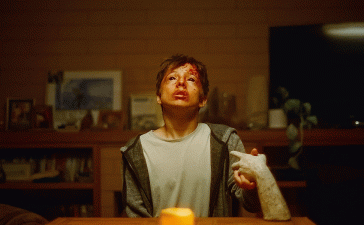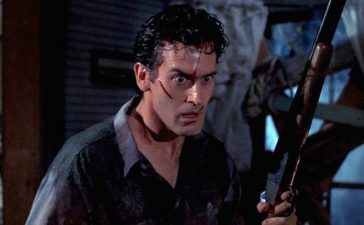There’s a scene in Terry Gilliam’s 1995 sci-fi film, 12 Monkeys, where psychologist Dr. Kathryn Railly (Madeleine Stowe) delivers a lesson on the psychological phenomenon called the Cassandra Complex.
“Cassandra in Greek legend”, she says, “was condemned to know the future but to be disbelieved when she foretold it. Hence the agony of foreknowledge combined with the impotence to do anything about it.”
It’s a thematic callback to the film’s time travel plot. James Cole (Bruce Willis back before he got really bored with everything), a convict, has been sent back from the bleak future of 2035 to collect a specimen of the virus that is destined to wipe out most of humanity, leaving behind a barren and empty world. The idea is that scientists in his own time might be able to use the sample to devise a vaccine. The problem is that the human mind is not built to withstand the phenomenon of time travel; in the film’s subjective now of 1995, James simply appears unhinged, and his foreknowledge of the apocalypse only underlines his apparent madness. Thrown into the mental health system he encounters Dr. Railly, who eventually comes to believe his story, and also charismatic sociopath Jeffrey Goines (Brad Pitt at the height of his Brad Pittness), a radical ecological activist who may be responsible for releasing the pandemic that dooms the human race.
Pandemics. Ecological catastrophe. Knowing what’s coming and being unable to convince the powers that be of the doom looming on the horizon. The received wisdom is that science fiction is always, when you get right down to it, about the period in which it is written, but in the grim Spring of 2020, with the planet in lockdown as COVID-19 runs rampant, Australia still reeling from the most devastating bush fire season on record, the first extinctions directly caused by climate change being recorded, and activists like Extinction Rebellion hewing closer and closer to a (quite understandable, really) “by any means necessary” playbook, 12 Monkeys looks startlingly prescient, even if the dates are wide by a decade or two. The film itself seems to be suffering from Cassandra’s plight.
This is not something to be taken literally, of course; screenwriters David and Janet Peoples were not peering into a crystal ball when they sat down to write the script, and neither was Chris Marker when he made the acclaimed experimental 1962 short La Jetée upon which 12 Monkeys is based. Gilliam, a baroque fantasist who cut his filmmaking teeth as a member of the Monty Python troupe before going to direct dark fancies like Time Bandits, Brazil, and The Fisher King, had no interest in postulating a plausible future, or even a representative present; 12 Monkeys is packed with his usual grotesqueries and richly detailed urban, industrial landscapes. His technologies are weird-Rube Goldberg machines cobbled together from piles, ratchets, and gears, his characters leering, troubled freaks; here even the hero is a drooling madman, the villain a cock-eyed, narcissistic scion of power.
“More and more, what was once exaggerated to the point of parody now seems on point; Bruce Willis squeezing himself into an elaborate, condom-like hazmat suit to venture outside seemed ridiculous in ’95, but in a world where people are punching over toilet paper and cutting water cooler bottles into makeshift face-shields, it’s not that big a leap.”
Except Pitt’s character isn’t the villain, is he? He’s a red herring; his coterie of eco-terrorists, the titular Army of the 12 Monkeys, are relatively harmless adolescent rabble-rousers, a convenient scapegoat for the powers that be, and it’s hard not to be reminded of the “Greens arsonists” narrative that lit up the dumber corners of social media during the Morrison Fires. The real bad guy, gradually introduced over the course of the film, is Dr. Peters, David Morse’s bland fanatic scientist, who ultimately triggers the apocalypse with a world trip, infecting every airport he alights at.
While COVID-19 is no lab-grown bioweapon (but again, the dumber corners of the internet will tell you otherwise…), the scene where Morse’s plague-bearer settles into his window seat has an extra frisson today, knowing what we do about how our interconnected world has opened up terrifyingly fast and far-reaching vectors of infection. More and more, what was once exaggerated to the point of parody now seems on point; Bruce Willis squeezing himself into an elaborate, condom-like hazmat suit to venture outside seemed ridiculous in ’95, but in a world where people are punching over toilet paper and cutting water cooler bottles into makeshift face-shields, it’s not that big a leap.
Still, for all 12 Monkeys’ catastrophic themes, it’s essentially a hopeful film – as long as you look at the big picture. For sure, the individual characters are absolutely doomed; James Cole is locked in a time loop where, as a child, he ultimately witnesses his own murder when his adult self is gunned down before his eyes in a crowded airport, and it’s clear that Dr. Railly’s experiences with time paradoxes and the inevitability of wide-scale death have ruined her for life, but humanity will continue, albeit much diminished – hence the appearance of one of the scientists from the future on the plane next to Peters as he embarks on his genocidal world tour. Asked what she does for a living, she archly replies she’s in insurance – she, not poor doomed James Cole, will retrieve the sample that saves the world. Cole dies, as do billions more, but in the grand scheme of things, the human race wins out.
Which is probably not much comfort if you’re one of the countless choking out your last breath as the pandemic sweeps the planet, or even if you’re wondering if that slight cough is the dreaded coronavirus. Still, when you’re curating your self-quarantine viewing experience, you might want to give 12 Monkeys a spin.










